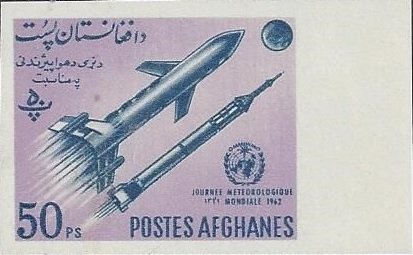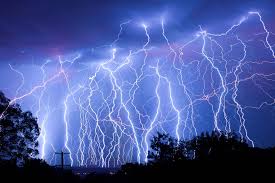Stamp: Rockets (Afghanistan 1962)
Rockets (Afghanistan 1962)
29 November (Afghanistan ) within release UN World Meteorological Day goes into circulation Stamp Rockets face value 50 Afghan pul
| Stamp Rockets in catalogues | |
|---|---|
| Michel: | Mi: AF 732B |
Stamp is square format.
Also in the issue UN World Meteorological Day:
- Stamp - Rocketts face value 50;
- Stamp - Rocketts face value 100;
- Stamp - Rocketts face value 5;
- Souvenir Sheet - Rocketts face value 5;
- Stamp - Rockets face value 50;
- Stamp - Rockets face value 100;
|
Data entry completed
53%
|
|
|---|---|
| Stamp Rockets in digits | |
| Country: | Afghanistan |
| Date: | 1962-11-29 |
| Print: | Photogravure |
| Perforation: | Imperforate |
| Emission: | Commemorative |
| Format: | Stamp |
| Face Value: | 50 Afghan pul |
Stamp Rockets it reflects the thematic directions:
Meteorology is a branch of the atmospheric sciences (which include atmospheric chemistry and physics) with a major focus on weather forecasting. The study of meteorology dates back millennia, though significant progress in meteorology did not begin until the 18th century. The 19th century saw modest progress in the field after weather observation networks were formed across broad regions. Prior attempts at prediction of weather depended on historical data. It was not until after the elucidation of the laws of physics, and more particularly in the latter half of the 20th century, the development of the computer (allowing for the automated solution of a great many modelling equations) that significant breakthroughs in weather forecasting were achieved. An important branch of weather forecasting is marine weather forecasting as it relates to maritime and coastal safety, in which weather effects also include atmospheric interactions with large bodies of water.
A rocket (from Italian: rocchetto, lit. 'bobbin/spool') is a vehicle that uses jet propulsion to accelerate without using any surrounding air. A rocket engine produces thrust by reaction to exhaust expelled at high speed. Rocket engines work entirely from propellant carried within the vehicle; therefore a rocket can fly in the vacuum of space. Rockets work more efficiently in a vacuum and incur a loss of thrust due to the opposing pressure of the atmosphere.
A spacecraft is a vehicle that is designed to fly and operate in outer space. Spacecraft are used for a variety of purposes, including communications, Earth observation, meteorology, navigation, space colonization, planetary exploration, and transportation of humans and cargo. All spacecraft except single-stage-to-orbit vehicles cannot get into space on their own, and require a launch vehicle (carrier rocket).



